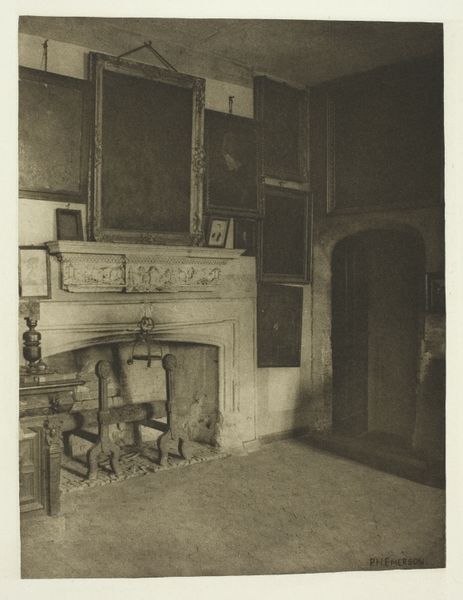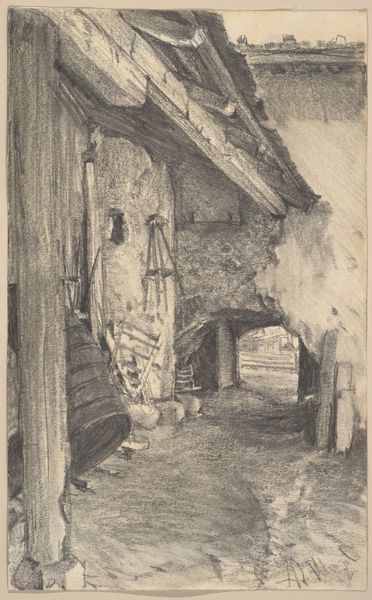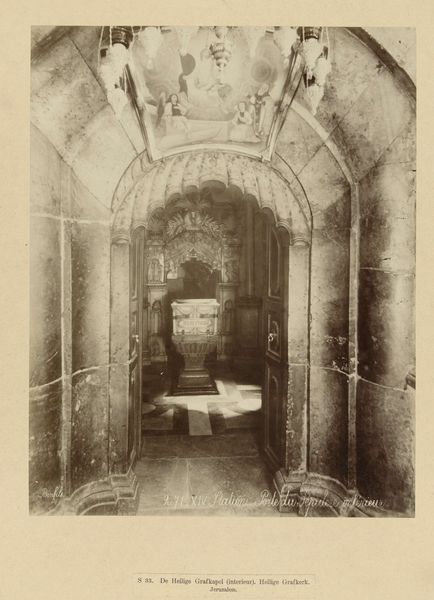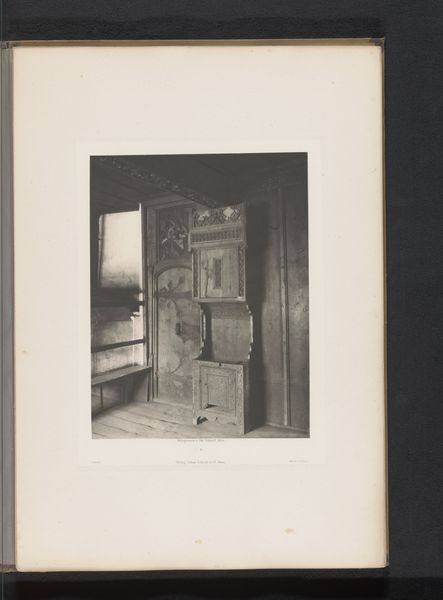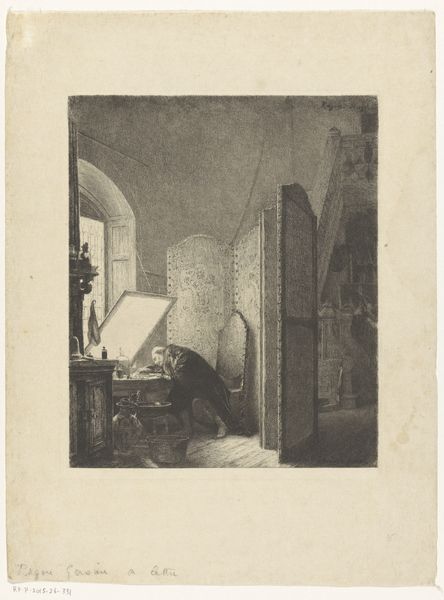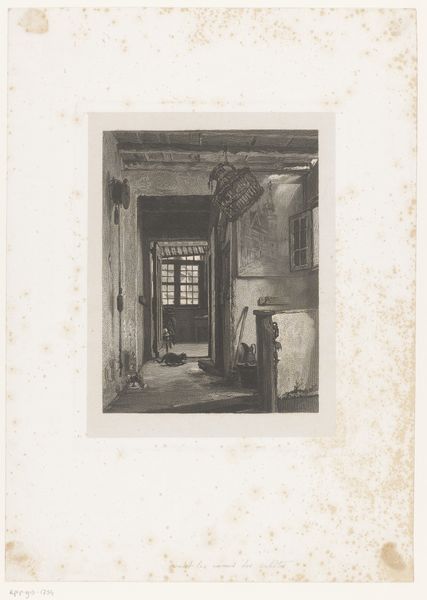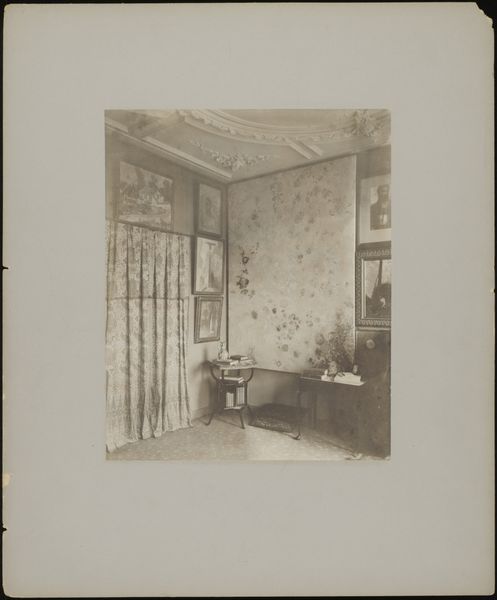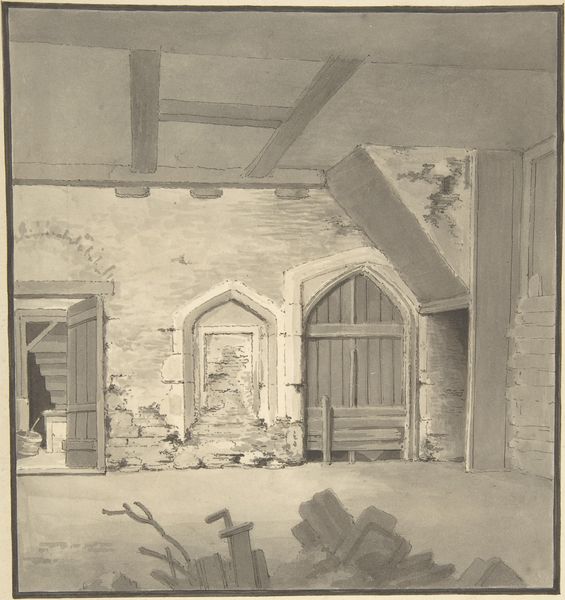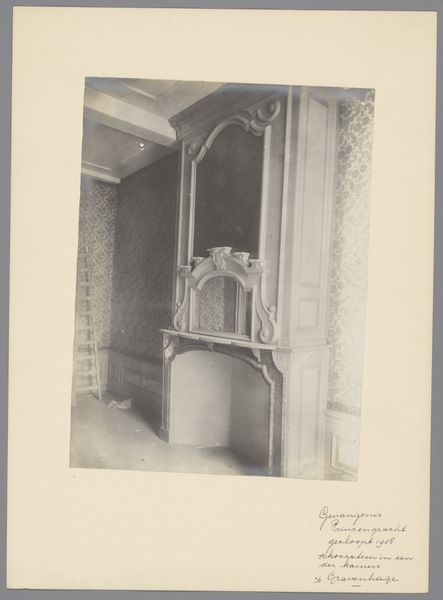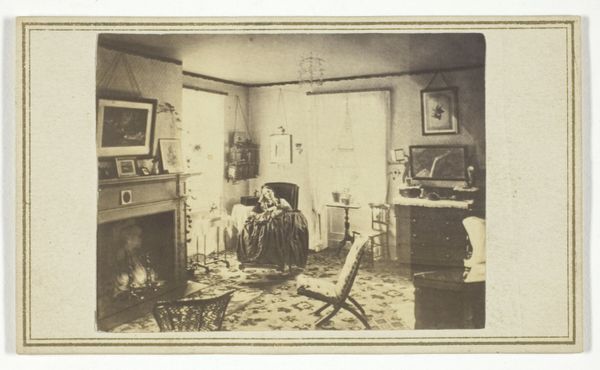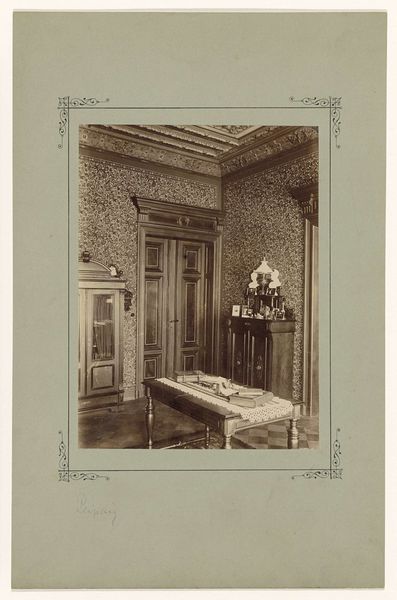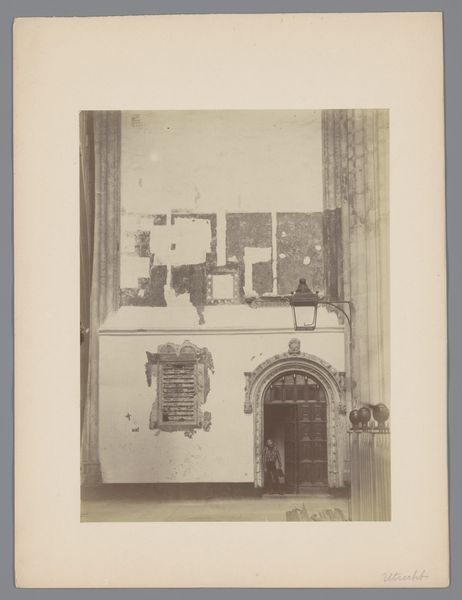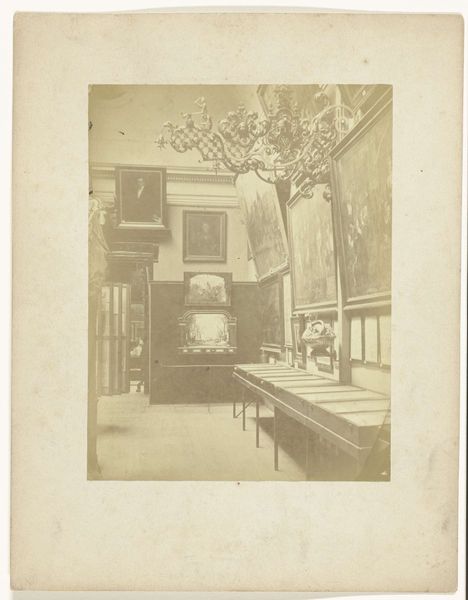
Arbeiders in een huis dat gesloopt wordt ten behoeve van de aanleg van een spoorweg, Parijs 1897 - 1900
0:00
0:00
Dimensions: height 239 mm, width 178 mm
Copyright: Rijks Museum: Open Domain
Curator: Emmanuel Pottier's "Arbeiders in een huis dat gesloopt wordt ten behoeve van de aanleg van een spoorweg, Parijs" roughly translated to "Workers in a house being demolished for the construction of a railway, Paris," created between 1897 and 1900, is a powerful photograph rendered as a gelatin-silver print. Editor: There's such a stark contrast here between the delicate floral wallpaper and the violence of demolition. It's instantly evocative of loss, and the precariousness of progress. Curator: Yes, and the wallpaper serves as a vestige of domestic life. Notice how the floral patterns, now peeling and torn, contrast with the industrial purpose looming in the background. Wallpaper like that spoke of stability and bourgeois identity; the railways represented something else entirely. Editor: It makes me think about whose lives were disrupted by this so-called progress. These workers are actively destroying someone's home, their history. Where did the previous inhabitants go? This image speaks volumes about the cost of modernization. The lone chair is such a stark reminder of life before the wrecking ball. Curator: The image highlights this tension beautifully. It could be said that there is visual symbolism in the layering of surfaces. This suggests the passage of time and transformation, how we leave our trace on dwellings, only to see it changed beyond recognition. Editor: Definitely, the symbolism of home turned into industry feels particularly resonant today, doesn't it? Gentrification, urban renewal... all these things leave behind similar stories of displacement. This image serves as a powerful indictment of such processes, capturing a very specific moment of upheaval in Parisian history, yes, but its broader themes still resonate globally. Curator: I agree; Pottier captured a pivotal moment where the iconography of home gives way to industrial advancement, highlighting a broader and universal theme of cultural continuity versus change. Editor: It is a potent reminder of how we must confront the ethical implications of development, making art a very visceral form of political protest. Curator: The memory of these now lost spaces live on through images such as this one. Editor: Making this both an artifact and a provocation to consider, and question, the narrative of progress.
Comments
No comments
Be the first to comment and join the conversation on the ultimate creative platform.
